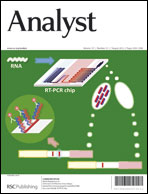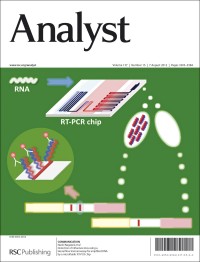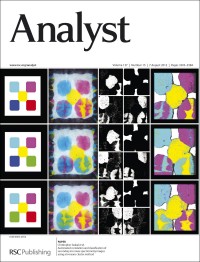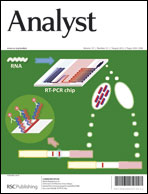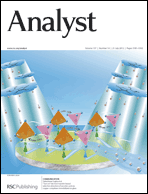In this issue of Analyst we have two lovely covers for you to admire. On the outside we have an image from Sangmin Jeon and colleagues from Pohang University of Science and Technology, Korea. In their paper they report a new way of detecting Salmonella bacteria, a common cause of food poisoning. This simple, rapid, and cost-effective method used magnetic (superparamagnetic) nanoparticles and TiO2 nanocrystals.
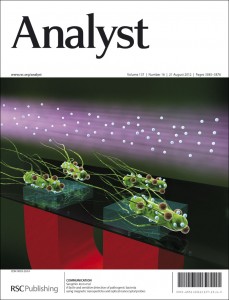 A facile and sensitive detection of pathogenic bacteria using magnetic nanoparticles and optical nanocrystal probes
A facile and sensitive detection of pathogenic bacteria using magnetic nanoparticles and optical nanocrystal probes
Jinmyoung Joo, Changyong Yim, Donghoon Kwon, Jaejin Lee, Hwa Hui Shin, Hyung Joon Cha and Sangmin Jeon
Analyst, 2012, 137, 3609
DOI: 10.1039/C2AN35369E
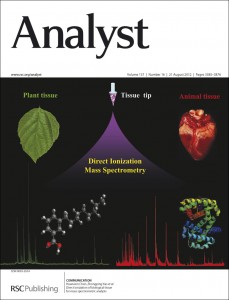 From Zhong-Ping Yao at The Hong Kong Polytechnic University, China, comes the inside front cover. Together with a team from around China, they have been analyzing biological tissue at the molecular level. They have been able to directly ionize and analyze both plant and animal tissue by mass spectrometry under ambient conditions.
From Zhong-Ping Yao at The Hong Kong Polytechnic University, China, comes the inside front cover. Together with a team from around China, they have been analyzing biological tissue at the molecular level. They have been able to directly ionize and analyze both plant and animal tissue by mass spectrometry under ambient conditions.
Direct ionization of biological tissue for mass spectrometric analysis
Bin Hu, Ying-Han Lai, Pui-Kin So, Huanwen Chen and Zhong-Ping Yao
Analyst, 2012, 137, 3613
DOI: 10.1039/C2AN16223G
These cover articles will be free to access for 6 weeks, so click through and have a read.













